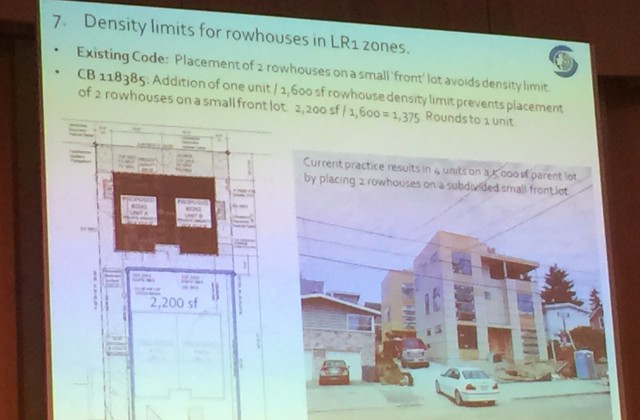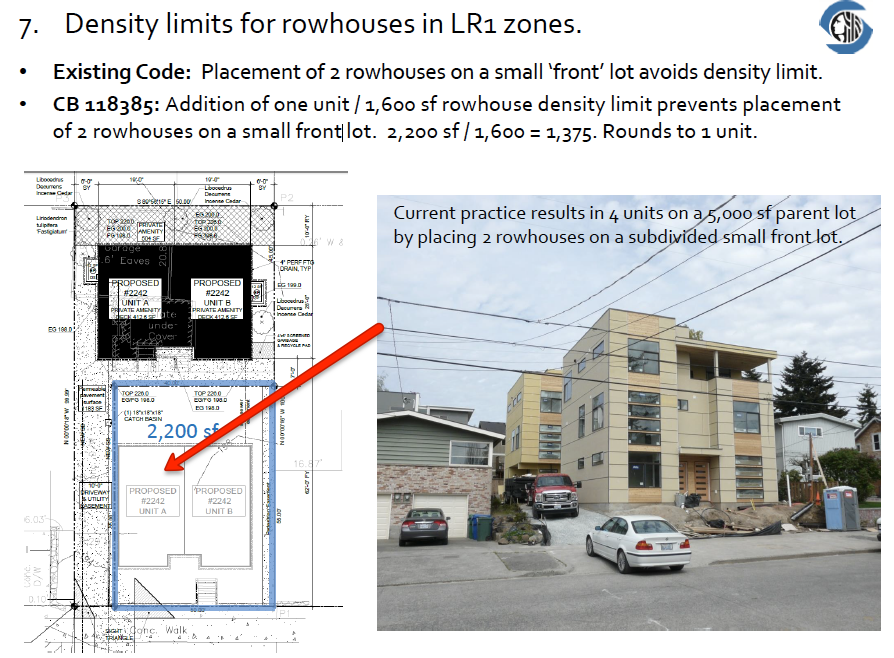Can You Have One House in a Row?
1. A number of persons or things arranged in a line, especially a straightline:
2. A line of persons or things so arranged:
3. A line of adjacent seats facing the same way, as in a theater:
This slide shows the effect that the Council’s proposal would have for some low-rise rowhouse projects. What’s the problem? Some developers have found a way to put two rowhouses in, get this, a row! In the slide you see four units of housing two town houses in back and two row-houses in front. The proposed rounding change which would limit rounding up FAR on smaller lots would only allow one rowhouse, making it no longer a rowhouse at all.
I’ll be writing more about this as the discussion unfolds, but the complete disconnect between everyone down at City Hall with reality is stunning (see my hot dog post which made former Councilmember Sally Clark so mad). While funny, somehow the idea of bureaucrats in cubicles writing legislation that creates a row of one house isn’t that disturbing. What is disturbing is a Council that claims it’s concerned about housing prices but is actively considering legislation that will make projects like the one is this slide have fewer, bigger, more expensive units. I’m sure they’d dismiss this as “not meaningful.” Ask the three families that will pay more for the houses that are left and the one that won’t be able to buy because the unit doesn’t exist.



